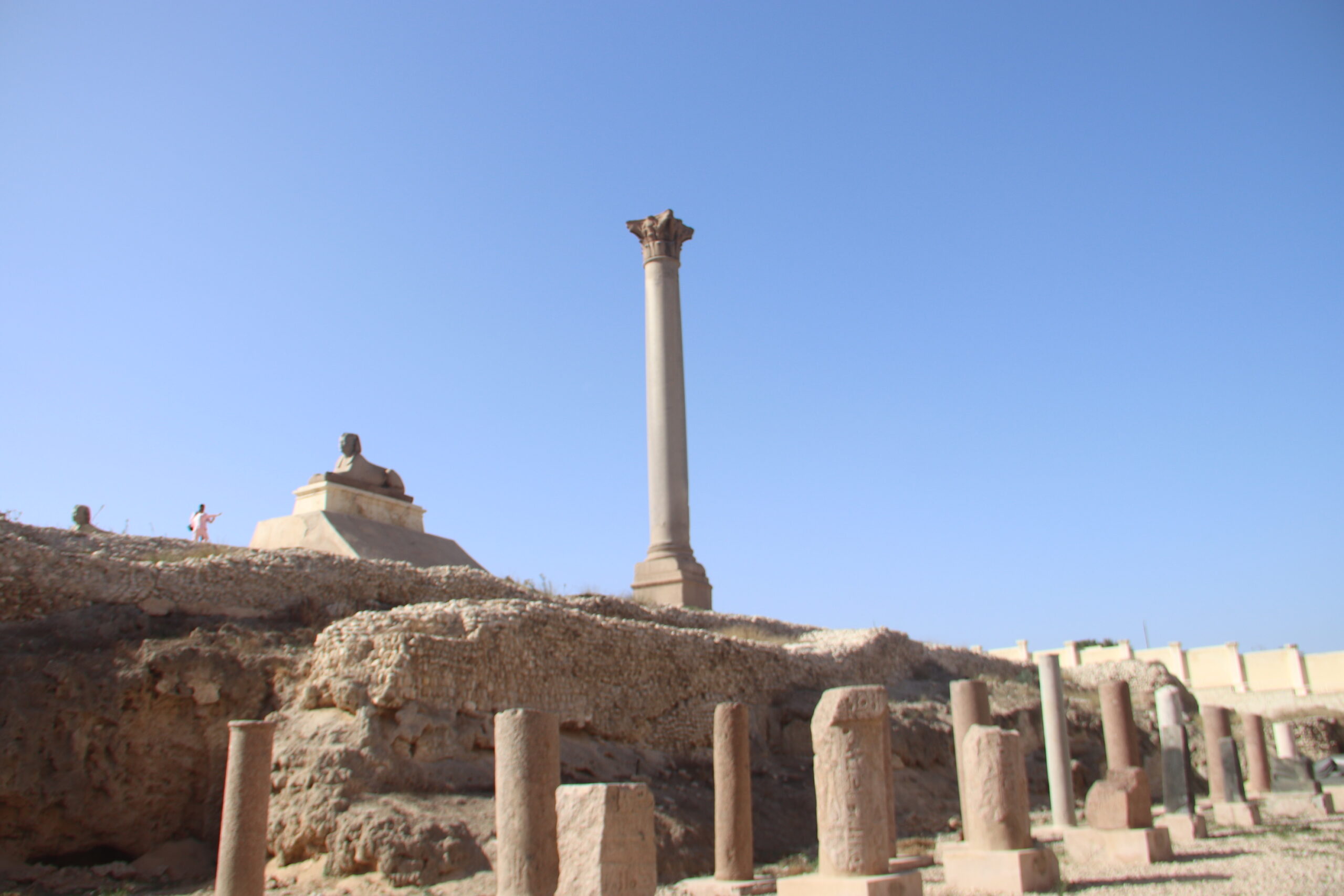Introduction: Pompey’s Pillar, an impressive triumphal column from the Roman era, is a prominent ancient monument located in Alexandria, Egypt. Soaring to a height of approximately 28 meters (92 feet), it stands as a significant symbol of the city’s rich historical heritage.
Historical Background:
Construction and Purpose:
Erected in 297 AD, Pompey’s Pillar was built to commemorate the triumph of the Roman Emperor Diocletian over a rebellion in Alexandria, as well as his subsequent provision of food aid to the city’s population.
Despite its name, the column has no association with Pompey the Great. The misnomer likely originated during the medieval period.
Architecture and Materials:
Crafted from a single piece of red Aswan granite, the pillar is one of the largest monolithic columns ever constructed.
Elaborate carvings and inscriptions honoring Diocletian adorn the capital and base of the column.
Significance and Legacy:
Cultural and historical importance:
Pompey’s Pillar holds great cultural and historical significance as the sole freestanding column known in Roman Egypt. It serves as a testament to the remarkable engineering achievements of its time.
Furthermore, it symbolizes the fusion of Egyptian and Roman cultures during the period of Roman rule in Egypt.
Tourism and Preservation:
Today, Pompey’s Pillar stands as a major tourist attraction, attracting visitors from all corners of the globe.
Ongoing preservation efforts aim to safeguard the column against both environmental and human-induced harm, ensuring its longevity as a cherished historical landmark.
Conclusion: Pompey’s Pillar remains an extraordinary relic of ancient Alexandria, embodying the city’s historical importance and the magnificence of Roman engineering. Its enduring presence continues to captivate and inspire, reflecting the intricate tapestry of Alexandria’s past.



